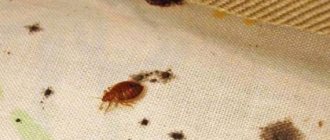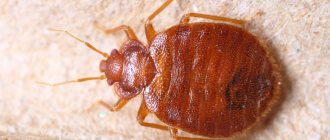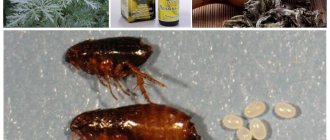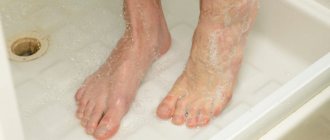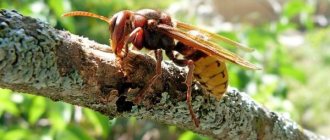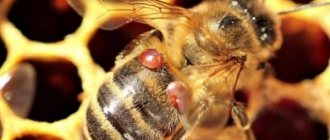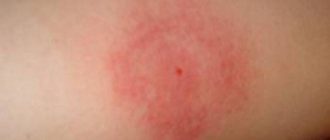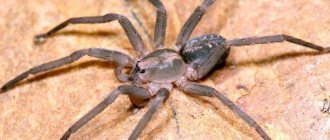In the spring, unwanted neighbors often appear on a summer cottage or in a private house - wasps, bees and hornets, which are dangerous to humans, wooden buildings and garden trees. To avoid stings and damage to structures, it is important to know how to get rid of hornets and prevent them in the future. Traditional methods, pesticides and mechanical destruction of nests can help solve the problem.
Hornets are large insects that cause fear with their appearance, and their bites are dangerous to life and health. In order to protect yourself and your site, it is important to know how to deal with pests and destroy their nests
The article contains effective methods for exterminating pests, and also presents effective preventive measures that will help prevent the occurrence of such a problem.
Features and danger of hornets
The hornet is a large insect belonging to the winged subclass and arthropod phylum. Adults reach 3-5 cm depending on the subspecies. Insects have a large head, on which there are three eyes and antennae, the number of which differs in males and females. The rounded abdomen is covered with alternating yellow and black stripes.
In females, there is a sting at the tip of the belly, which simultaneously serves as an ovipositor. In its normal state it is retracted, and insects use it only for self-defense. At the same time, pests can use it repeatedly, making multiple bites.
Hornets are similar in appearance to wasps - they are black and yellow in color and have transparent wings. They are distinguished by their larger size, the presence of a “waist” at the junction of the abdomen with the chest, and increased aggressiveness towards humans and bees.
The pest's bite is very dangerous, because along with the sting, poison penetrates into human flesh, causing an acute allergic reaction and intoxication of the body. Swelling and pain occur at the site of the lesion. Repeated hornet stings cause anaphylactic shock, which can be fatal.
To live and breed offspring, insects create nests, which are located mainly in attics, under roofs, in the walls of houses and other hard-to-reach places. They often settle in the hollows of trees located near the apiary. This makes it easier for them to find food as they steal honey from the bees, destroying them. To preserve the apiary, it is important to promptly destroy pests or expel them from the territory.
In winter, all individuals die, leaving only the fertilized uterus, which, when warming, lays eggs and nurses the offspring. It is better to carry out the operation to destroy the nest in winter or early spring - in such conditions the insect population is not so large.
To build nests, pests choose secluded corners where they have access to protein foods or sweets. Favorite places are tree hollows, attics, walls, and the area under the roof. They often settle near apiaries, which poses a threat to beekeepers
The structure of a hornet's nest
Hornets can rightly be called real architects. The hive is created practically and thoughtfully. The nests are spherical or cone-shaped. The average size is 30 to 50 cm wide and 50 to 70 cm long. Sometimes you can find a large dwelling over 1 m. It usually weighs up to 1000 g.
The nest can be compared to a multi-story building, which has a huge number of apartments and several entrances. The rooms are honeycombs. The role of entrances is performed by compartments. There is a thin partition between the compartments.
The tiers are located in a perpendicular position. This is where the uterus moves. They are held together by several legs. One dwelling has 3 or 4 compartments. The number of tiers is from 7 to 10. The structure is neat and airy.
Hornets nest.
Precautions when killing insects
Hornets are dangerous with their bites, so when planning a special operation to destroy them, take the appropriate safety measures:
- wear a special protective suit or thick clothing that insects cannot pierce with their stings;
- take care to protect your face by wearing a special hat with a mesh;
- act carefully - do not make noise, do not wave your arms or sticks, so as not to provoke the hornets into aggression;
- when working with poisons, use disposable containers to prepare the solution, which must be disposed of after use;
- use a respirator in case of spraying aerosols with toxic substances;
- When burning a nest, follow fire safety rules to avoid fire.
When going to fight hornets, wear a special protective suit for beekeepers or thick clothing to protect yourself as much as possible from insect bites
Providing first aid for a bite
If a person does suffer from a hornet bite, it is necessary to take action as quickly as possible in order to prevent possible complications of the victim’s condition.
First aid must be provided in the following order:
- Suck out the poison from the affected area on the skin - this procedure must be carried out immediately, since effectiveness is possible only within a short time from the moment of attack until the poison spreads through the blood. Of course, this will not prevent all consequences and will not eliminate the risk of allergies, but it will significantly reduce the intensity.
- Apply ice or something cold to the bitten area - this action will reduce pain and prevent swelling from growing.
- Do not touch the affected area, as any rubbing or scratching of the wound will help stimulate blood circulation, which maximizes the rate of spread of the poison throughout the body, and there is also a risk of infection, which will only worsen the victim’s condition. Do not try to find the sting, since the hornet, due to its smooth surface, will not leave it in the wound (unlike a bee).
- Disinfect the affected area of the skin using any available method - you can use hydrogen peroxide, medical alcohol or other disinfectants. The bite should be treated with the utmost care, excluding any pressure.
- Apply wet sugar to the bite area, having previously wrapped it with a bandage or towel - this action makes it possible to draw out a certain amount of poisonous components that have not yet had time to disperse throughout the human body. Remove the bandage after 10 minutes - this period is enough to draw out the possible amount of poison.
- Take a swab, pre-moisten it with citric acid/vinegar and apply it to the affected area - the procedure will reduce the inflammatory process and reduce the intensity of the allergic reaction. This is done due to the fact that toxic substances contain alkali, and acid can destroy the structure.
- If there are pronounced consequences of the attack, severe discomfort and no improvement in the condition for several days, this is a serious reason to seek urgent help from a specialist to receive professional medical care.
Neutralization and destruction of nests
To ensure you get rid of pests, destroy the nest. To find it, it is enough to follow the flight of insects, and then, depending on the location, choose the optimal method of destruction.
Sealing the nest
To destroy the hornets' home, use polyurethane foam. At night, when pests are less active, treat the hive with a sealing compound, thoroughly filling all cracks and holes. The lack of oxygen and the ability to fly out for food will lead to the extinction of all individuals.
To destroy the nest and its inhabitants, seal the evidence. This can be done with polyurethane foam or other sealing compound.
Pouring water
To flood the nest, prepare a bucket filled with water. For maximum effect, add an insecticide designed for wasps and hornets to the liquid. Place a bucket under the nest and gently lower it into the water. The liquid will fill the honeycombs and the insects will not be able to get out of their house, which will lead to their death.
Burning out with fire
Fire will help get rid of a pest nest located in an open area. Douse the home with a flammable mixture (gasoline) and set it on fire. During the operation, make sure that the flame does not spread to trees, dry grass or outbuildings, otherwise you will have to fight not only pests, but also the fire.
Smoke bomb
A smoke bomb (Mukhoyar, FAS, HELP, etc.) will help destroy the nest. The application procedure is as follows:
- Insulate the room and seal all cracks so that insects cannot escape.
- Make sure that there are no children, pets, or food near the treatment area.
- Activate the smoke bomb according to the instructions.
- Clean the room.
Smoke bombs will help control pests. Before use, carefully read the instructions and take the recommended safety measures
Traps and bait
Traps with bait will help get rid of single insects remaining after the destruction of the nest. You can make them yourself using available tools and materials. Spoiled fish, a mixture of honey and beer, and fermented fruit syrup are used as bait.
The simplest trap option is sticky tape, which is used to catch flies and cockroaches. You can do it yourself:
- Cut out small strips of thick cardboard.
- Apply a generous layer of honey or fruit syrup. This will serve as both bait and a trap for insects to stick to.
- Place bait in areas where hornets frequently appear.
- Replace traps periodically and burn old ones.
Homemade traps with bait located in places where insects are active will help you catch single pests.
You can make other traps with your own hands:
- put the bait in a glass jar and close it with a lid with a hole in the shape of a cross and the edges of the cut curved inward;
- Cut off the top of a plastic bottle (1/3) and insert it back with the neck down. Fill the bottom reservoir with bait and place the trap in a visible place;
- Pour the fermented fruit syrup into a large container (bucket) and leave it near the pest habitat.
Overview of hive destruction methods
The easiest way: the shelter is destroyed in winter, when there are not a single insect inside. However, this option has a significant disadvantage - you will have to endure the presence of pests throughout the spring and summer, waiting for their natural death in the fall. In addition, the queen is unlikely to return to her original place, because she does not live longer than a year, which means that older females will begin to search for a new place for refuge. When deciding how to remove a nest in the warm season, it is recommended to consider the following methods:
Drowning
This option is suitable for cases when the shelter is in a hanging position. It is placed in a bucket. There is no need to remove the nest; you just need to place a container of water of suitable depth directly underneath it. It is important to ensure that the entire structure erected by the hornets is completely immersed in the liquid. It is better to do this at night, since insect activity decreases at this time.
If the nest is in the ground, you can pour boiling water over it. The hornets' home can be large; you will need a bucket of water.
Burning
First, the shelter is doused with a moderate amount of flammable substance (kerosene, gasoline), then set on fire. The method is suitable for situations where the nest is located on a base made of non-flammable material.
Poisoning
Use any toxic insecticide: GET, Executioner, and similar drugs. The substance is sprayed into a plastic bag and wrapped around the hornets' shelter.
Spray some plastic with insecticide (Get, Lambda Zone, Executioner) and wrap it around the nest.
If the nest is built in a depression, for example, a hollow, you can pour insecticide inside. In this case, the entrance must be closed. Shelters located in the ground are doused with boiling water.
Interesting video: Methods for destroying hornet nests
Insecticides for killing hornets
To combat hornets, insecticides are used in the form of aerosols or powders. Before use, carefully read the instructions and recommended safety precautions, wear a respirator, gloves and a tight suit that will protect against bites. Baiting should be carried out at night, when most insects are in their homes. After the hornets die, the nest is removed and burned.
Insecticides will help get rid of insects in hard-to-reach places. When working with chemicals, observe safety precautions and strictly follow the instructions for use.
Insecticides can be applied in several ways, depending on the location of the hive and its volume:
- spray the insecticide spray onto the nest for a few seconds. If necessary, repeat the treatment several times;
- pour the prepared poisonous composition into the bag, put it on the socket and secure with tape;
- pour the solution into a nest located in the ground or hollow of a tree and seal all holes with a rag so that insects cannot escape.
The following medications will help get rid of hornets in your dacha under your roof:
| Drug name | How to use | Peculiarities |
| "Bros" | Spray the can onto the nest | After treatment, burn dead insects to avoid poisoning pets |
| "Otos" | Dissolve 10 g of powder in 100 ml of water and spray the nest | The poisonous substance does not act immediately, so angry insects can attack in a swarm. Follow safety precautions when using this method |
| "Moskital" | Spray an aerosol can onto the nest | The drug is effective and high cost |
| Wespex Quick | Spray the nest | An effective remedy in the fight against hornets, bees and wasps. Safe for people and pets |
| "Dichlorvos" | Spray the product in the form of an aerosol in the pest habitat | Preparations produced by different brands are suitable for killing hornets. |
| Dr. Klaus | Direct the aerosol stream at the nest for 10-20 seconds | Carry out processing with doors and windows closed. Re-bait if necessary. |
If you cannot cope with the hornets on your own or their home is located in an inaccessible area, contact a pest control service for help. Specialists will quickly and effectively exterminate insects and clean up the area.
Insects flying out of the hive
During autumn the house becomes empty. This is influenced by a number of nuances:
- after the start of swarming, males die very quickly;
- cold and frost kill worker hornets and the queen, and fertilized individuals move to warm places;
- in the fall, the female produces a special enzyme that prevents her from freezing in a state of suspended animation in winter;
- choose a temporary home - a hollow, a tree, an outbuilding;
- The hornet does not settle in an old nest; the construction of a new house always begins.
Folk remedies for fighting insects
Folk remedies that are easy to use and safe for humans will help remove hornets. The insect extermination operation should be carried out in early spring, when the insect population is not so large.
Effective folk remedies and methods of combating hornets:
- Place a small piece of meat near the pest habitat. Insects will flock to the aroma of food, and they can be destroyed with an insecticide;
- chop 3 caps of fly agaric and boil them with 100 g of honey and 200 ml of water. Place the bait in half-liter jars and place it in the insect habitat. This composition has a poisonous effect on hornets;
- 3 tbsp. l. Dissolve boric acid in 50 ml of boiled water and boil for 10-15 minutes. Pour the solution into small containers and place around the nest. This will destroy the prey hornets, but will not lead to the complete extinction of the family.
Hang bunches of red capsicum near the nest - the bright aroma will scare away pests or, conversely, prevent them from leaving the hive, and they will die of hunger
Use of chemicals
- Dichlorvos is one of the most popular drugs used to kill insects. Its principle of operation is simple: the components of the drug, sprayed into the air, immediately enter the respiratory tract of individuals. Once inside an insect, the aerosol leads to paralysis and suffocation within a few seconds. But it is possible to achieve high effectiveness of this product only if the drug gets on insects. Carefully monitor all hornets leaving the nest and try to spray each one.
- The sulfur bomb shows high efficiency. The smoke from smoking the product quickly spreads over the area, which leads to suffocation of insects. If individual individuals manage to fly away, they will definitely not return to their cocoon. Moreover, you will already have time to destroy their nest and queen.
- Means for combating the Colorado potato beetle. Treat watermelon rinds with a remedy for the Colorado potato beetle and leave them in a place accessible to insects. The workers will carry the poisoned bait back to the nest and, over time, the entire population will die.
- Ammonia. If you find a nest that is just beginning to develop, you are in luck. It houses a queen and several worker hornets. Dampen a rag with alcohol, open the nest and place the rag inside. The queen will die and the development of the insect colony will stop.
Preventing the appearance of hornets on the site and in the house
After exterminating hornets in your home or area, take the recommended preventive measures to prevent the insects from appearing again:
- carefully treat the place where the nest was located with poisons or at least ordinary vinegar, place repellent herbs or an artificial nest there;
- place traps on the territory where single insects and queens will fall, which will prevent the construction of a nest in this territory;
- inspect the house and area for places suitable for nesting hornets, seal cracks and holes;
- Throw out garbage and food from pets' bowls in a timely manner - the lack of protein food will make the area less attractive to pests.
In the spring, check all potentially dangerous places on the site where pests can establish nests. Destroy hives in the initial stages of formation, before new insects hatch
The hornets that have settled in the neighborhood cause fear and pose a threat to people. To protect yourself and clear the area of pests, exterminate the insects and destroy the nest. You can do this yourself using mechanical methods, chemical or folk remedies, as well as through special services. After getting rid of the hornets, take preventive measures to avoid the problem from recurring.
Construction process
The way the hive construction process is carried out surprises everyone - the insects put in a lot of work, discipline and self-organization. They try to make their own home as comfortable and durable as possible, capable of protecting them from hot and cold weather conditions.
The choice of material that serves as the basis of the nest is also interesting - they use wood and bark. They especially fell in love with birch, which is why their buildings have a lighter shade than those of wasps or bees. They carefully chew pieces of wood, moistening them with saliva - the resulting material allows them to sculpt honeycombs, walls, partitions and shells.
The choice of a place for construction is made by the queen, who begins the construction of the future house. Initially, she begins to sculpt the first ball of cells, where she lays eggs. After about a week, the eggs hatch into larvae, which after 14 days turn into pupae. After another two weeks, the nests are replenished with young workers, continuing the construction of housing.
The number of insects that will develop in the season also depends on the level of productivity of the new generation. After the worker hornets fly out, eggs of future females and males are laid. Since emergence begins at the sexually mature stage, swarming occurs immediately after this.
Why are giant wasps dangerous to humans?
Hornets are peace-loving insects; they use their sting only for self-defense. The behavior of hornets changes dramatically near the nest. A person approaching a building within 2-3 m is perceived as an aggressor. The guards attack the intruder by striking them with their stings. Hornet venom contains toxins that cause severe pain and an allergic reaction in the body. Its effect on the immune system of children is especially dangerous.
Attention. The consequences of bites vary depending on the amount of poison injected and the characteristics of the body. This may be varying degrees of edema or anaphylactic shock.
If dangerous insects have settled under your roof, then you need to know how to get rid of the hornets' nest. There is no point in postponing the event; there are more individuals every month. The best option is to follow the queen and destroy her nest at the initial stage. The female hornet is quite large (35 mm), and cannot be confused with an ordinary wasp. If a huge insect often flashes around the area, it means its nest is somewhere nearby.
Watch the queen, she will lead you to the house. So far there are several hundred with larvae. They can be safely knocked down with a handy tool and burned. Make sure that the hornet is not nearby.
How to get rid of hornets - drive away uninvited neighbors
Being close to large wasps can bring a lot of problems. Beekeepers especially suffer from it. Hornets are natural enemies of bees, destroying them in huge quantities. A wasp's nest in the countryside will ruin your entire vacation, because you will have to fear for the safety of your children. After the first bites, the question becomes urgent: how to get rid of hornets? The confrontation between humans and insects has been going on for a long time, so there are plenty of ways to kill wasps, from homemade traps to professional exterminators.
How to deal with hornets
The proximity of hornets and wasps near humans is very ambiguous. Natural predators are capable of not only destroying harmful insects, helping gardeners to fight them, but also pose a serious threat to human health. After all, the consequences of a stinging insect bite can include redness and swelling of the damaged area of the skin, as well as serious complications such as bronchial congestion, suffocation, rapid heartbeat and numerous hemorrhages. The lack of timely medical care for the victim during the development of anaphylactic shock can even lead to death. Insect bites are especially dangerous for children and people with allergies. Therefore, it would be useful to know how to get rid of hornets.
How to remove hornets from an apartment
Most often, the attention of hymenoptera is attracted to the aroma of ripe fruits, vegetables or various delicacies in the house. Having flown into the human abode, the insect can no longer find a way back. And to kick him out of the room, you don’t have to run around with a newspaper in your hand. You should not try to kill the hornet by making sudden movements with your hands. Such behavior of the offender will be regarded as an attack, and then an insect attack cannot be avoided.
If there is only one randomly flying specimen in the house, then it is enough to arm yourself with an ordinary glass jar. The “uninvited guest” is carefully covered with it; using the lid, the container is closed. The trap is opened only on the street. In a similar way, you can use a matchbox or work gloves made of thick fabric.
If hymenoptera are a regular occurrence in the house, then you need to find nests where a population of fearsome insects lives. They usually prefer quiet places: attics or barns. Hymenoptera housing can also be placed on a tree standing next to the house or under a canopy. If the nest is in an accessible place, then you can get rid of hornets at home using the following methods.
Chemicals
Hornets can be killed using insecticides. It is enough to put a plastic bag on the nest, after spraying its inner surface with a toxic substance. Hornets are especially afraid of Dichlorvos, Tetrix, Get, Karbofos, Raptor or Sinuzan. Preparations for agricultural pests such as Parus or Aktara are no less effective.
Using hornet poison, you need to arm yourself with tape and glue the edges of the bag to the surface of the ceiling. If pests have settled in a wall partition, they can be removed from the wall in a similar way, using any insecticide designed to kill bedbugs and cockroaches.
If the pest nest is on a tree, then the polyethylene trap must be secured to the branch so that the toxic composition does not erode.
Means to combat hornets
Folk remedies
However, it is still more advisable to use folk remedies for hornets rather than pesticides:
- Red capsicum effectively repels hornets from your home. It is enough to hang it next to the nest to drive insects away from the area.
- Boric acid is another effective remedy for hornets and wasps. 1 tbsp. l. the product is mixed with 3 crushed fly agaric mushrooms, after which the composition is poured with water (200 g) and boiled for 3 minutes. As bait, add 1 tbsp to the resulting mixture. l. honey This kind of poison for wasps and hornets is poured into small containers, which are placed in places where pests accumulate.
- Alcohol-based mint lotion is another effective way to repel insects. Hornets will not build a nest if mint, lemon balm or geranium are planted on the site.
- Water trap. A bucket filled with water is brought to the nest so that all its inhabitants get wet and soon die. To achieve maximum effect, prop up a bucket of water with a stepladder or wooden plank.
- You can fight hornets in an apiary using the method described above, however, using boiling water. A large amount of boiling water is poured over the nest from all sides, which is usually quite enough to obtain the desired result.
- Polyurethane foam. To destroy a hornet in the attic, or rather its entire “lair,” it is important to fill all the exits in the nest with foam. This procedure should be carried out at night, when all the inhabitants are in the cocoon. And it is preferable to do this together, simultaneously filling all the holes. Insects without access to light and oxygen will soon die, after which the nest can be removed from the ceiling and disposed of.
- Carbon dioxide is no less effective on insects. The nest is carefully treated with foam from a fire extinguisher, as a result of which its inhabitants quickly die. A hive that has no signs of life is knocked down and disposed of.
- Petrol. Another of the most effective ways to combat hornets in a summer cottage is to spray the nest with gasoline or other flammable substance. After which the insect shelter is set on fire. However, this method is unacceptable if the nest is located indoors or at a high altitude.
Traps
The method of removing hornets using traps is especially popular among summer residents. They are made from an ordinary plastic bottle. The upper part of the container is cut off and placed neck down in the lower half. As bait, beer, kvass or jam is poured onto the bottom of such a structure. Insects that have climbed onto the smell of the treat will no longer be able to get out of the trap.
You can get rid of only a small number of insects in this way. If there is a whole family on the site headed by the queen, then this method is not acceptable.
Do I need to get rid of hornets?
Experienced gardeners know that hornets are beneficial. Just one family of these insects destroys up to 500 pests - bedbugs, caterpillars and butterflies. Hornets can attack a person if they perceive his behavior as a threat to their safety. If insects have settled in a garden plot, their nest can be left, but if they have chosen an attic or the roof of a house as a place of settlement, then they must be destroyed.
If there are hornets, how to get rid of them in the house? First you need to determine the location of the nest. Then, having assessed the threat, you need to choose the optimal method of exterminating insects. The most common method is to knock the nest down with a stick, put it in a bag and take it out of the house.
Fighting methods
There are quite a few methods of combating the wasp family, and everyone can use the most suitable one; let’s look at them in more detail.
Poisoned Bait
A fairly simple and fast method that requires a minimum of time. In order to prepare such bait, you need to take the meat and chop it finely, or take minced meat straight away. Next, the minced meat is mixed with poison and placed in small containers.
Such baits are deadly not only for those individuals who directly feast on the poisoned treat, but also for the entire colony, since they will bring food into the colony to feed the larvae and the queen.
You need to be very careful with such baits and they should be installed in closed boxes, for example, cardboard ones, in which small holes are made.
This way, poisonous food will not be available to cats and dogs. Parisian greens are often used as a poison, which must be worked with while observing all safety measures.
Traps
In this case, wasp traps are highly effective; you can use both homemade and purchased ones. Such traps are placed throughout the apiary so as not to attract bees to them; kvass or beer is used as a filler.
Destroying a nest
Starting in spring, caring apiary owners begin to observe and care for insects. If hornets are spotted, the process of searching for the nest begins, which must be destroyed. To destroy it, you can use absolutely any method, water, fire, chemicals.
In fact, bees are not so helpless in the face of predators; they can easily eliminate the threat on their own, albeit if they are attacked by a small number of invaders. Each owner decides how exactly to deal with predatory individuals; he also decides to destroy them or try to drive them away from the territory.
Of course, close proximity to them always poses a danger to humans, but one should also remember the benefits they bring to agricultural crops.
Calling specialists
This option is the safest and easiest for people, because all the work is done by specialists, and you evaluate the result. Now there are quite a large number of companies that offer these services, so there is no need to rush and contact the first one you come across; you need to compare the prices for these services, study the list of works and it would not be superfluous to read the reviews.
These works are carried out in accordance with an agreement concluded between the company and the client; this agreement must contain a clause that would guarantee that after the work has been carried out, these individuals will not appear on the site again.
Owners of country houses most often encounter this problem, so be prepared for the fact that the further the house is from the city, the more expensive the service will be.

